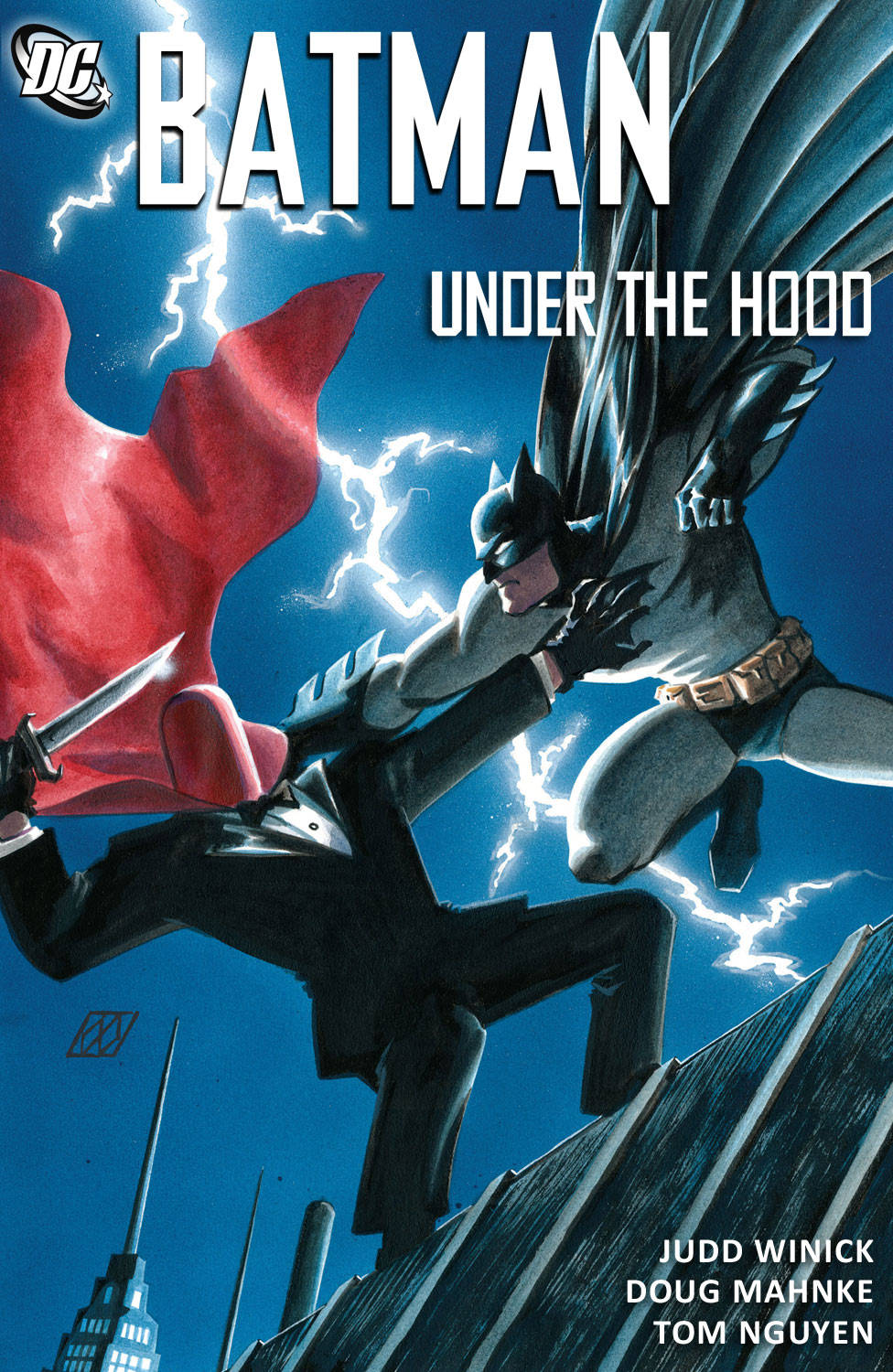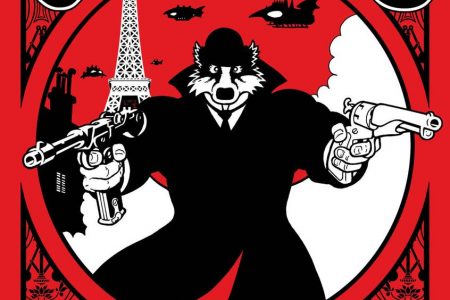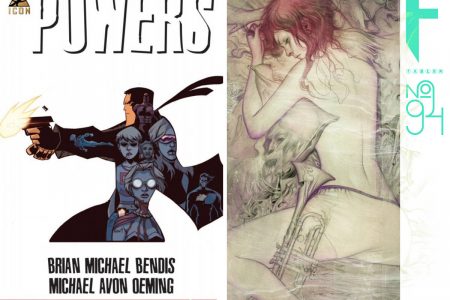Batman #635–641 (vol. 1) and #645–650 + Annual #25
by Judd Winick and Doug Mahnke, Paul Lee, Shane Davis, Eric Battle
Growing up, there were superheroes who were mostly and definitely dead, not coming back, died in action: Bucky, Barry Allen and Jason Todd. How things change. Now, I know nothing in comics is sacrosanct but it was important that these characters were dead. They had a purpose in their heroism and their end. These things are no longer important when the return can be used as an event in the modern comic book industry. I’m not judging this aspect of the medium I enjoy so much; it’s just the way it is. As long as we get a good story out of it (Brubaker’s return of Bucky was a delightful surprise), I really don’t care. Hell, I didn’t care one way or another about Hal Jordan, but Geoff Johns wrote an enjoyable tale about his return to the DC universe, so history schmistory I say.
The important thing here: if you’re going to bring back someone from the dead, then (a) it had better be a good story and (b) the manner in which you bring them back from the dead had better be good too (see Brubaker’s Bucky for prime example). This was my worry about this story: it was under the control of Judd Winick. I loved Winick’s early work – The Adventures of Barry Ween, Boy Genius is quite simply superb – but his superhero work (Green Arrow and Exiles being examples I have read) was never as good. The thought that he would be responsible for such a huge turnaround in the Batman mythos didn’t fill me with confidence.
Fortunately, the story in the first volume is well handled: it starts with Batman fighting a villain in a red hood, who is as good a fighter as Batman, who unmasks Batman before unmasking himself to the surprise of Batman. Cut to five weeks earlier: there has been a hostile takeover of Wayne Industries R&D; the Red Hood has taken over the drug trade (offering the dealers protection from Batman and the Black Mask, the gang boss for whom they had been working for). In the course of events, Batman and Nightwing face off against Red Hood and then Amazo (in a well-choreographed fight scene, well narrated and handled). The Red Hood steals kryptonite from the Black Mask just to get the lay of the land, before he beats up the Joker with a crowbar and revealing who he is – something Batman suspected when he contacts Zatanna, Green Arrow and Superman (asking the latter two what it was like coming back from the dead). Then the Red Hood reveals who he is to Batman, providing him with blood and hair so that he can prove who he says he is: Jason Todd, the second Robin, killed by the Joker (or, rather, killed by a public vote), the character that provided the extra guilt for Batman when he is working with new sidekicks.
In the second volume, the story starts out with flashbacks to the early days of Todd, how he became Robin (weren’t comics simpler, even back then), what he was like as Robin, how he became dangerous and angry. Then it returns to the present, with Todd destroying the Black Mask’s operation and toying with Batman (‘I just love to watch you work’). Things get complicated when Deathstroke offers Black Mask a position in The Society, and offers help in the shape of Captain Nazi and the Hyena (‘Hyena kind of looks like a girl from the back’), meaning Todd and Batman have to work together. However, the story goes off the rails when an entire issue shows a fight between the Red Hood and Black Mask, which then turns out to be a fake-out – it’s not Todd, who has the Joker hostage and wants Batman for the final face-off.
The problem with the face-off is that the resolution is ridiculous and badly handled; Todd is provided with perfect motivation – he is angry with Batman because the Joker is still alive, not for all his other crimes but for killing Todd specifically. This is an understandable reason for what he has been doing and how he’s been doing it; however, the response from Batman is poor: ‘It’d be too damned easy’, which is a weak response to the crux of the entire story. It’s made worse by the dramatically unsatisfying and poorly choreographed stand-off ending, which ruins the good work preceding it. There is an epilogue which, although nicely drawn by Shane Davis, undermines the entire story by coming up with a really ridiculous explanation of how he came back: Superboy Prime punching the multiverse (or whatever it was) somehow just brought Jason Todd back to life. That’s it. Basically, it was magic. No good answer, just a wand wave. The only enjoyable aspect was that he was captured by Talia Al Ghul, who puts him in a Lazarus Pit, which brings back his memory (letting him go with the words: ‘You remain unavenged’). But it goes out of the way to tie it in, even linking it into the awful Hush story (in the Clayface fight chapter). Such a shame.
There are good things here. Winick creates a believable and entertaining story for the most part. The way he has Todd operating and Batman reacting works well, and there is lots of humour (something he can overplay, but he balances it well). He is made to look even better by the sterling art of Mahnke – his muscular, moody, dynamic, well-choreographed, expressive art is spectacularly good and perfect for Batman. It is a shame that he doesn’t pencil the entire storyline – Shane Davis does some nice fill-in issues, but Paul Lee’s art is weak by comparison, and Eric Battle’s art is messy, rushed and uninspired next to his work. The first volume in this collection is the strongest, with an emotional connection to Batman, Todd’s MO and Manhke’s art, but it falls apart in the last half of the second collection, leaving the reader with a sense of a wasted opportunity.




